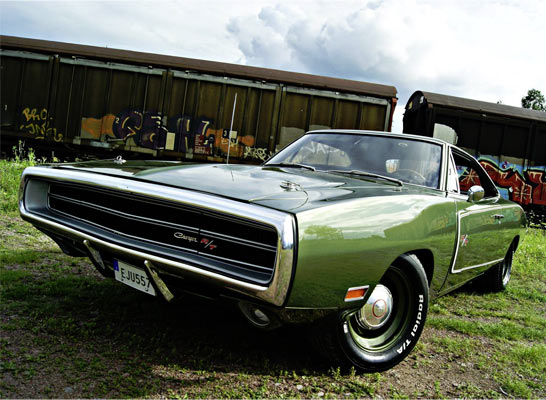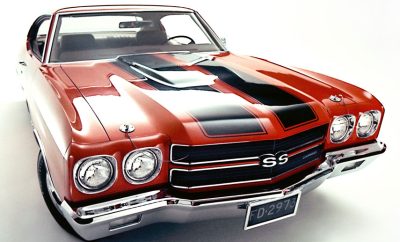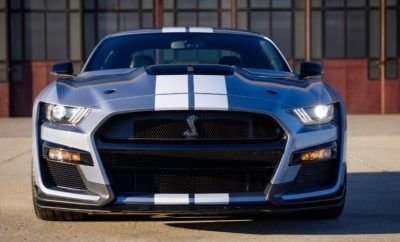Best Muscle Cars
Muscle Cars: An Overseas Perspective

By Dave Ashton
Sometimes it’s a good thing in life to see other people’s perspective. Those who don’t have a vested interest or emotional connection with a certain group. This can definitely be applied to muscle cars being traditionally a stateside born hobby.(Australian you are included, but we are generalizing here.)
This article was inspired by an article in Hotrod magazine, titled, ‘Muscle Car Translates Very Well Overseas’ as a feature documenting a muscle car enthusiast in Peru. Not exactly a country you would expect as a hotbed for vintage muscle cars. But no matter where you look around the globe, there are pockets of muscle car enthusiasts with not just a love for the old but also the new. Denmark, Norway and Sweden to name but a few all have their own muscle car clubs, tracks, meets and so on.
Originally coming from British shores, I get the concepts and the caveats. Generalizing, British and European vehicles have the mindset of the four-cylinder. V8’s feel more specialist and muscle cars feel as exotic and weird to the general public as a newly discovered tropical animal. The problem is also compounded with Europeans traditionally driving smaller vehicles with small body sizes and engines compared to American vehicles. When a muscle car is experienced by the average European, it’s a bit like being used to eating a small burger and then being served the world’s biggest porterhouse. It initially feels too much, overwhelming and over the top.
This view is mostly aimed at the older muscle cars. Modern muscle cars are becoming more accepted, for example the current Mustang GT is one of the best sellers in Germany. Cars like the Dodge Hellcat are still seen as ‘imports’ mainly due to the steering wheel being on the other side, but all the caveats traditionally associated with muscle cars like suspension issues and labelled as huge gas guzzlers have been addressed (well, at least the fuel economy has improved a little…)
The main problem is that the traditional muscle car is fighting an entrenched mindset from the start. It’s almost a face palm situation. ‘The horsepower for the money is the best around…don’t care’. ‘They all now have independent suspension..don’t care.’ Historical views of anything from America I think play a large part from a European perspective. You can even go back to World War II to see this view – ‘oversexed, overpaid and over here.’ In other words, loud, confident and there’s clearly a hint of jealousy in there from the more stoic European attitudes.
Those who get it, get it…..
Just like muscle cars themselves which are a small slice of the whole automotive industry, enthusiasts are in many countries, but they don’t make up the majority. The situation is basically like Marmite, you either like it or you don’t. Those who do, can’t get enough of it.
Firstly, those who get it buy into the loud and confident nature of a muscle car. A European performance vehicle wants to be a regal dinner party while showing an understated wealth, while the muscle car is a dance club ready to ‘partaaaaaa’ at any given moment with piles of dollar bills being thrown at the dancers.
Size wise, American vehicles traditionally look super-sized compared to the other vehicles on European roads, then and now. Too big and cumbersome is the traditional view. That negative view now becomes a statement to the European muscle car enthusiast. You generally hear a V8 before you see it and once a muscle car gets into view, heads turn and it’s kind of what you want from the special car in your life.
When it comes to engine size, the European mindset has always been getting the most out of a smaller engine. It makes sense with far higher fuel prices in Europe, compared to America, but it’s also the mindset. Owning a vehicle where the mindset for getting more power is simply adding more displacement is almost outrageous. A 454ci. V8 or roughly 7.4 litres engine in a European car is almost preposterous, but to those who get it, it’s just another way of thinking. (The current national gas price in the United States per gallon is $2.427(£1.84). In the UK its $6.95(£5.269). Even greater a difference in the past which still makes it a caveat to own a vehicle with a huge engine in the UK.)
The other possible caveats thrown up especially for the older muscle cars is reliability and quality of build. Modern muscle has squashed all caveats traditionally associated with muscle cars with suspension, handling and performance, but the objectors always throw the caveats of the past. Muscle cars rust, some are badly built and its antiquated technology. Comparing like for like or the same aged cars, European vehicles of the late 60s and early 70s mostly had asthmatic engines, bodywork that would rust at the first sign of rain, leaf spring suspensions and carburetors. Basically, the same problems just in smaller packages.
The last caveat is that traditional muscle cars handled like a a barge in bad weather. True, but as above, all vehicles were dealing with the technology of the time. So although a late 60’s and early 70’s muscle car weighed the same as a small planet, European vehicles had similar technology in their suspension, just less weight to get round a corner.
Conclusion
All this isn’t to convince those out there that muscle cars are better than the equivalent European performance vehicles or your next performance car purchase should be a muscle car, but to appreciate them for their unique way of thinking. It’s just a different point of view.
As we are all becoming more worldly and accepting of how other nations do things. The muscle car, especially in its modern guise is becoming ever more popular in Europe as it’s being judged on its own merits, rather than its back history. Even though we can buy a regular muscle car model like the Dodge Challenger SXT with a 3.6L V6, muscle cars are still in the performance bracket where a 6.2 litre V8 engine isn’t out of the ordinary. All the past caveats about handling have been addressed, so it’s now really down to the historic mindset to be overcome.
The irony is that American car makes like Ford have been a mainstay in Europe for decades, many of the older models now being bonafide classics. Chevrolet are even a common sight. Dodge are still that exotic import.
Even stateside, some people get it and some don’t. An article on theday.com titled, ‘I Don’t Really Own That Ridiculous Muscle Car. Let Me Explain’ ends with the writer saying they prefer their Honda Accord as ‘cars are utilities to me’. That’s fine if that’s all you want from a car. But the negative view point reads more like someone who owns a smart phone and sees no point in why they make DSLR or medium format cameras(have a long discussion with a photographer over this point). It’s only clicking a button, right…….?
So, just like the Marmite analogy, those who get the concept of a muscle car both old and new love them, get the health benefits and why they have stayed around for so long. Some will never get the idea, but that’s fine, no exclusive club wants too many members.









0 comments